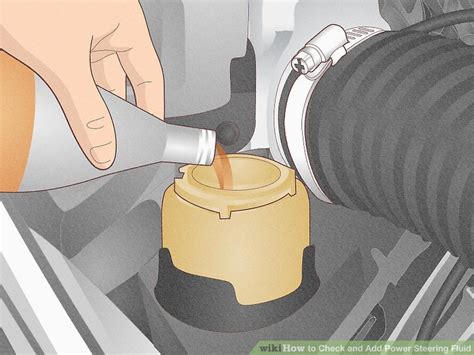How to Check Your Power Steering Fluid: A Simple Guide
Maintaining your car's power steering system is crucial for safe and comfortable driving. Low power steering fluid can lead to reduced steering responsiveness and even steering failure. Knowing how to check your power steering fluid levels is a simple yet essential skill for every car owner. This guide provides a step-by-step process, along with troubleshooting tips.
Locating Your Power Steering Fluid Reservoir
Before you begin, you need to find your power steering fluid reservoir. This is usually a small, plastic reservoir with a cap marked with a power steering symbol (often a steering wheel). The location varies depending on your car's make and model. Common locations include:
- Under the hood: This is the most common location. Look for it near the engine, often towards the front.
- In the engine bay: It might be tucked away amongst other components. Consult your car's owner's manual if you have trouble finding it.
Tip: Your owner's manual is your best resource for the exact location and type of power steering fluid your vehicle requires.
Checking Your Power Steering Fluid Level
Once you've located the reservoir, follow these steps:
-
Park your car on a level surface and turn off the engine. This ensures an accurate reading.
-
Locate the reservoir cap. It usually has markings indicating the minimum and maximum fluid levels.
-
Carefully remove the cap. Be prepared for a slight pressure release; the fluid may be slightly warm.
-
Inspect the fluid level. The fluid should be somewhere between the minimum and maximum lines. Note the color and condition of the fluid. Clean, light-reddish or amber fluid is typically good; dark, brown, or burnt-smelling fluid indicates it needs changing.
-
Replace the cap securely.
Interpreting Your Findings
-
Fluid level is low: If the fluid level is low, you'll need to add more power steering fluid. Never overfill the reservoir. Again, consult your owner's manual for the correct type of fluid. Adding the wrong type can damage your power steering system.
-
Fluid is dark or burnt: This signals that the fluid is old and needs to be replaced. This is a more involved process and may require a professional mechanic. Driving with severely contaminated fluid can damage your power steering pump.
-
Fluid level is within the normal range: Congratulations! Your power steering fluid level is fine.
When to Seek Professional Help
While checking your power steering fluid is a simple task, some issues require professional attention. Contact a mechanic if:
- You notice leaks: Any visible leaks from the power steering system are a serious issue and require immediate attention.
- You experience difficulty steering: This could be a symptom of low fluid, but it could also indicate a more serious problem with the power steering pump or other components.
- You're unsure about anything: If you're uncomfortable performing this check yourself, or if you're unsure about interpreting your findings, it's always best to consult a qualified mechanic.
Regularly checking your power steering fluid is a simple preventative maintenance task that can save you from costly repairs down the road. By following these steps, you can keep your car's steering system in top condition. Remember to consult your owner's manual for specific instructions and recommendations for your vehicle.
